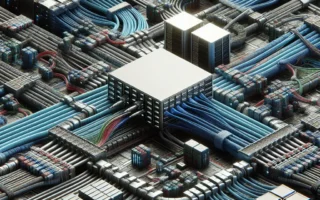Enhancing Big Data Analytics with Grid Technology
Enhancing Big Data Analytics with Grid Technology
Big Data analytics has revolutionized the way organizations extract valuable insights from large and complex datasets. However, the sheer volume and velocity of data generated in today’s digital world pose significant challenges for traditional analytics platforms. This is where grid technology plays a crucial role in enhancing Big Data analytics capabilities.
Grid technology, with its ability to distribute and parallelize computing tasks across multiple nodes, offers a scalable and cost-effective solution for processing Big Data. By harnessing the power of grid computing, organizations can leverage a network of interconnected resources to handle computationally intensive analytics workloads, thereby accelerating data processing and analysis.
Moreover, grid technology facilitates fault-tolerant and resilient Big Data analytics operations. By leveraging the distributed nature of grid infrastructure, organizations can ensure high availability and reliability for their analytics processes, mitigating the risks associated with hardware failures or network disruptions. This inherent fault tolerance is particularly advantageous in handling mission-critical analytics tasks where data accuracy and timeliness are paramount.
Furthermore, grid technology enables seamless integration with existing Big Data analytics frameworks and tools. Whether organizations are leveraging Hadoop, Spark, or other Big Data platforms, grid technology can augment these environments with distributed computing capabilities, enabling efficient resource utilization and improved overall performance.
In conclusion, the integration of grid technology into Big Data analytics workflows offers a compelling opportunity to enhance data processing speed, scalability, fault tolerance, and interoperability. As organizations continue to grapple with unprecedented data growth, the role of grid technology in empowering advanced Big Data analytics capabilities becomes increasingly indispensable.
Leveraging the Power of Grid Technology for Big Data Insights
Grid technology plays a critical role in the realm of big data analytics, offering immense potential for extracting valuable insights from large and complex datasets. One of the key aspects of leveraging the power of grid technology for big data insights lies in its ability to distribute processing and storage across multiple nodes, thereby enabling parallel computing and enhancing computational efficiency. This distributed architecture allows organizations to handle massive volumes of data more effectively, leading to faster processing times and improved scalability.
By harnessing grid technology, businesses can capitalize on its capability to manage, analyze, and visualize vast amounts of data in a cost-effective manner. Grid computing facilitates the seamless integration of disparate data sources, enabling comprehensive analysis and the identification of meaningful patterns and trends. Furthermore, the fault tolerance and high availability features of grid technology contribute to ensuring the reliability and continuity of big data analytics operations, thereby minimizing potential disruptions and downtime.
Moreover, the utilization of grid technology in big data analytics empowers organizations to address the challenges associated with data-intensive processes by optimizing resource utilization and enhancing overall system performance. This approach enables the seamless execution of complex analytical tasks and the generation of actionable insights, laying the groundwork for informed decision-making and strategic advancements.
In conclusion, the convergence of grid technology and big data analytics presents a compelling opportunity for organizations to extract profound insights from their data resources. By capitalizing on the distributed computing capabilities and scalability of grid technology, businesses can unlock the full potential of their data assets and gain a competitive edge in today’s data-driven landscape.
Exploring the Intersection of Grid Technology and Big Data Analytics
The intersection of grid technology and big data analytics plays a crucial role in handling the vast amounts of data generated in today’s digital world. Grid technology, with its ability to distribute computing tasks across multiple nodes, is a natural fit for the computational demands of big data analytics. By harnessing the power of grid computing, organizations can efficiently process, analyze, and derive valuable insights from massive datasets.
One of the key advantages of grid technology in the context of big data analytics is its scalability. As the volume of data continues to grow exponentially, grid computing provides the flexibility to scale resources according to the specific requirements of data analysis tasks. This scalability enables organizations to handle complex analytics workloads without being hindered by the limitations of traditional computing infrastructures.
Furthermore, the fault tolerance and reliability offered by grid technology are essential for ensuring continuous and uninterrupted data processing. In the realm of big data analytics, where the integrity of data and the consistency of analytical results are paramount, grid computing provides a robust framework for distributing computational tasks and maintaining data integrity throughout the analysis process.
The integration of grid technology and big data analytics also brings forth challenges related to data management, security, and efficient utilization of distributed resources. Addressing these challenges requires a comprehensive understanding of both grid computing principles and big data analytics techniques, as well as the ability to optimize the intersection of these two domains to extract maximum value from large-scale data processing.
In conclusion, the synergy between grid technology and big data analytics represents a powerful enabler for organizations seeking to extract meaningful insights and drive data-driven decision-making. By exploring the intersection of grid technology and big data analytics, businesses can unlock new possibilities for extracting value from their data assets and gaining a competitive edge in today’s data-centric landscape.



